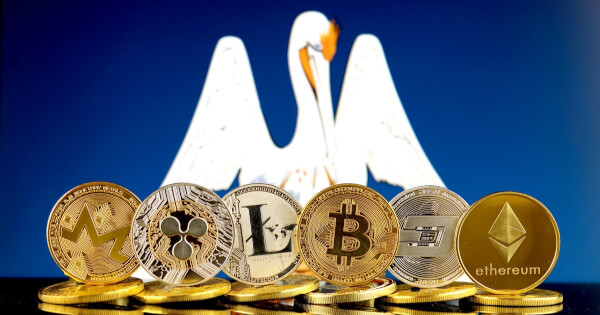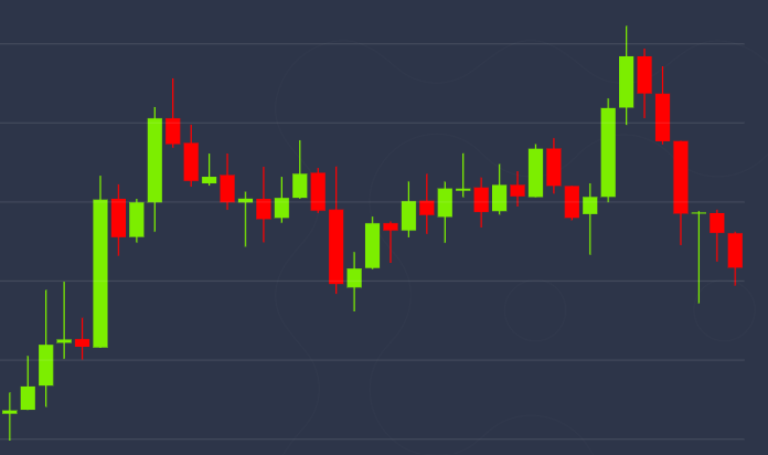Blockchain Bites: Facebook’s Calibra Facelift and Tencent’s ‘New Infrastructure’ Investments
We’re happy to be back after a recharging long weekend. Let’s get to the news.
India’s central bank has clarified its crypto stance, Tencent is looking to invest in “emerging technologies” including blockchain and Facebook’s digital wallet subsidiary announced a rebranding and new details.
You’re reading Blockchain Bites, the daily roundup of the most pivotal stories in blockchain and crypto news, and why they’re significant. You can subscribe to this and all of CoinDesk’s newsletters here.
Top ShelfLibra’s New FaceA statement announcing the rebranding of Facebook subsidiary Calibra to Novi also reveals details of the anticipated wallet product. The Novi wallet will operate as a standalone app, as well as provide interoperability with Facebook’s social messaging apps Messenger and WhatsApp, to make transactions as “easy as sending a message.” Novi customers will need to be verified using a government-issued ID. The wallet will initially be rolled out to a limited number of countries, though the release date still remains unclear.
‘No Such Prohibitions’India’s central bank has clarified the nation’s new crypto policy, months after the Indian Supreme Court lifted restrictions on banking crypto clients. Commercial banks can indeed provide banking services to traders and firms dealing in cryptocurrencies. “As on date, no such prohibition exists,” the Reserve Bank of India said on May 22. The statement came in response to a query filed by BV Harish, co-founder of the cryptocurrency exchange Unocoin.
Signed TransactionsMore than 100 addresses Craig Wright – the self-proclaimed inventor of Bitcoin currently being sued for half of his supposed multi-billion dollar stash of the cryptocurrency – claimed to be his were used to sign a message calling Wright a “fraud” and making it plain that he does not in fact own or control them. The Bitcoin addresses were inadvertently entered into the public record in the ongoing case against Wright.
Challenging AmazonIn a bid to attract users beyond the cryptoverse, Halsey Minor’s VideoCoin platform will launch Wednesday with fiat payment options. VideoCoin decentralizes the hosting and streaming of video, paying out a native token to participants in the network. “A company like Fox is never going to go to an exchange and buy volatile tokens. You kind of have to be in the crypto world to use crypto projects – and we are trying to break that barrier down,” Minor said.
Tencent’s InvestmentsTencent is investing 500 billion yuan ($70 billion) into “new infrastructure” based on emerging technologies including AI, cloud computing and blockchain over the next five years. The investments are aimed at recovering losses accrued during the coronavirus crisis and “further cement virus containment success,” Tencent’s senior executive vice president Dowson Tong told Guangming Daily.
Bitcoin 401(k)Bitwage has unveiled a trial of a bitcoin 401(k) plan. The pension plan is supported by crypto exchange Gemini, the custodian service Kingdom Trust, as well as the established pension provider, Leading Retirement Solutions, who keep records for the 401(k) plan with the Department of Labor and the Internal Revenue Service (IRS).
Trading CurrentsThailand is teaming up with a blockchain firm Power Ledger to encourage peer-to-peer trading of renewable energy. “Blockchain-enabled transactive energy solutions including peer-to-peer (P2P) energy trading, virtual power plants as well as renewable energy certificates and carbon credits trading will be the key to establishing economically viable renewable energy markets,” said the startup’s co-founder, Jemma Green, and help the nation hit its 25% renewable energy target by 2037.
Strategic InvestmentIndia’s largest cryptocurrency exchange, CoinDCX, has secured a $2.5 million strategic investment led by Polychain Capital with support from Coinbase Ventures. The investment will reinforce the exchange’s efforts to drive cryptocurrency adoption in the country after a major legal victory in March.
Telegram Throws in the TowelTelegram is no longer challenging the Securities and Exchange Commission’s ban on its blockchain token project in the courtroom. On Friday, the company filed an agreement for dismissal without prejudice of a previous appeal challenging the SEC’s prohibition of distributing gram tokens to U.S. investors.
Supporting Steem?Binance is forced to “technically” support last week’s hard fork of the Steem blockchain, according to the crypto exchange’s CEO. In a statement on Binance’s official blog Sunday, CEO Changpeng “CZ” Zhao said the exchange is “very much against zeroing other people’s assets on the blockchain,” but to not support it would mean that Binance users would not be able to withdraw their steem tokens.
Louisiana Licensing The Louisiana State Senate is about to consider a bill to regulate and license virtual currency businesses. If passed, the legislation would establish Louisiana’s first crypto licensing regime. Crypto businesses would have to apply with the state’s Office of Financial Institutions (OFI), fork over executives’ fingerprints, subject their “experience, character and general fitness” to investigation – and perhaps the business premises as well – and pay a nonrefundable registration fee, among other requirements.
Market IntelDigitization BoostMessari analysts wrote a report arguing the “coming digitization of money,” including the launch of CBDCs, could provide a “secular tailwind” for bitcoin. The resilience of cryptocurrencies has catalyzed government investigation into CBDCs, which in turn expose the wider population to the mechanics of cryptocurrencies. CBDCs, “will increase people’s comfort with and understanding of cryptocurrencies, get more people creating and using cryptocurrency wallets, and provide on-ramps into decentralized cryptocurrencies like bitcoin,” the analysts said. This insight comes from First Mover. Get it in your inbox here.
Inflation and PriceRewards per block mined on the zcash blockchain – launched and supported by the Electric Coin Company – are scheduled to be cut by 50% sometime in November. The privacy-centered crypto is often criticized for its high levels of inflation, though some industry experts are saying its programmatic halving could solve this problem. This case study could reveal insight about the impact inflation has on a cryptocurrency’s price.
Fees and TransactionsBitcoin’s average transaction fee has dropped 53% from $6.64 to $3.06 in the past five days, as the backlog of unconfirmed transactions sitting in the blockchain’s mempool has dropped 71% over the same time period. (Decrypt)
Crypto Long & ShortVC InflowsAndreessen Horowitz (a16z) stirred up discussion last week by claiming the crypto economy is teetering on the edge of its next cycle of development, just days after it unveiled a second $515 million crypto-focused fund. CoinDesk’s Noelle Acheson looks at venture capital inflows into crypto and what a16z’s plans means for the direction of this industry. “[V]enture funding implies building, steady progress, support for the never-ending search for product-market fit and a relatively attractive profile for institutions looking for return with reasonable risk,” she said. You can sign up for Crypto Long & Short here.
Opposite EditorialSpiritual Reflections on the Bitcoin HalvingAllen Farrington, a freelance writer, reflects on bitcoin’s third programmatic halving and what the shared event means for the future of the network and the internet. “The bitcoin halving happened at the same time for everybody because the Bitcoin protocol is the same thing for everybody. It knows no borders and no nationalities. It knows no time zones,” he said.
What I Learned the First Time I Lost a Million DollarsJeff Dorman retells the tale of his gains and losses on Wall Street and what this experience means for risk management in the age of digital assets. “The ability to stay disciplined with risk management changed my career. I always knew I had the tools required to be a successful investor, and I’ve always been convinced I can make smart investments, but it took years to realize the difference between good asset managers and bad ones comes down to more than just picking good investments,” he writes.
Who Won #CryptoTwitter?Subscribe to receive Blockchain Bites in your inbox, every weekday.Disclosure Read More The leader in blockchain news, CoinDesk is a media outlet that strives for the highest journalistic standards and abides by a strict set of editorial policies. CoinDesk is an independent operating subsidiary of Digital Currency Group, which invests in cryptocurrencies and blockchain startups.









